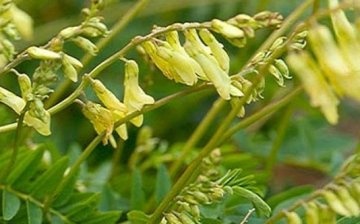Astragalus membranous - a medicinal plant
Astragalus is a wild plant, a shrub from the legume family. It is popularly known as cat pea or centaury. This genus inhabits mainly in temperate climates, only sometimes coming across a little further north or in the tropical zone. Astragalus membranous is most often used for medicinal purposes. It is one of the fifty main herbs of traditional Chinese medicine, which is still included in many dietary supplements and herbal remedies today.
The upper part is harvested during flowering, and the roots - in the fall. The plant contains organic acids and polysaccharides, flavanoids and essential oils, tannins, vitamins and microelements.
Traditional medicine considers this herb to be a good fortifying immunity, tonic. Astragalus membranous has diuretic and diaphoretic, analgesic properties. Once in the body, it accumulates selenium - a substance that is necessary for normal blood formation.
It is used as an antioxidant, as well as in the treatment of tumors, diabetes and AIDS. Outwardly - for the treatment of wounds and boils, during childbirth - to stimulate the discharge of the placenta, with a cold - as an antipyretic and expectorant, etc. etc. Often this plant can be found in the composition of multicomponent herbal preparations, in combination with ginseng, less often as a mono-drug. It is used in the form of decoctions and infusions, ointments and tablets, capsules and extracts.
Not recommended for use in childhood (up to two years), during pregnancy and lactation, with hypersensitivity. When combining a herbal preparation with other medicines, it is better to consult a doctor first.
Astragalus membranous is listed in the Red Book as an endangered species of terrestrial flora.



